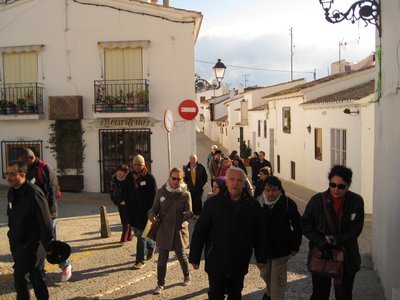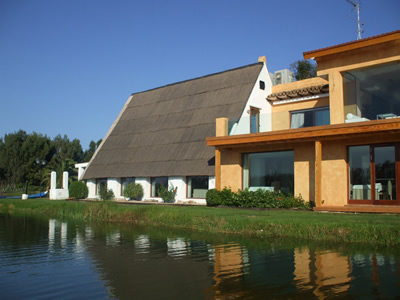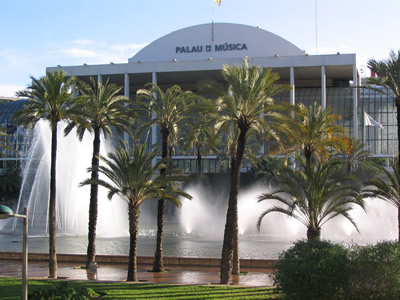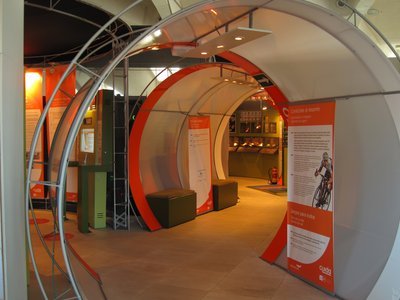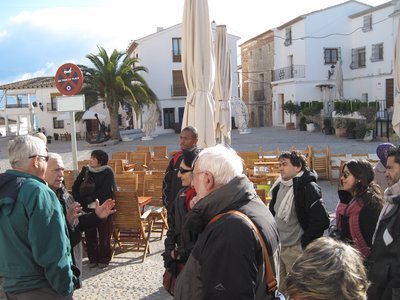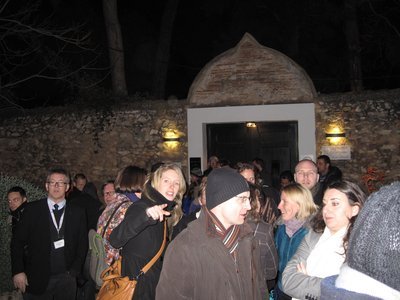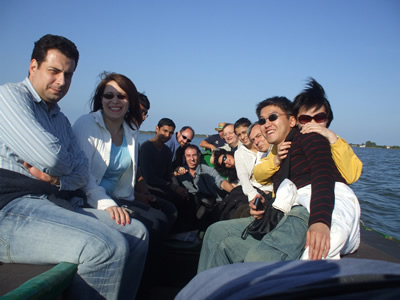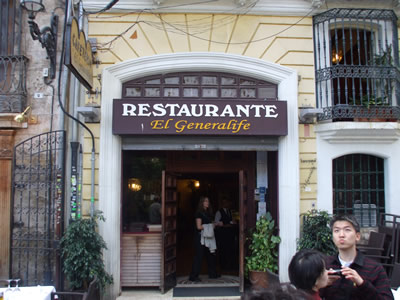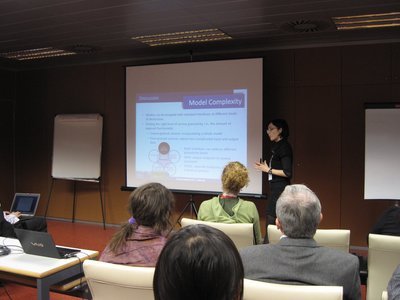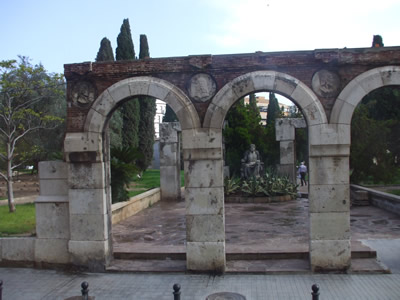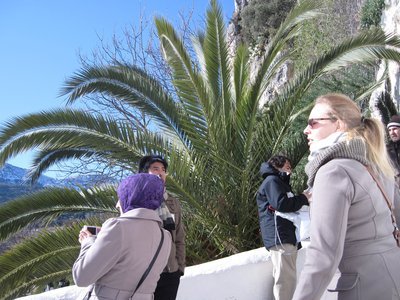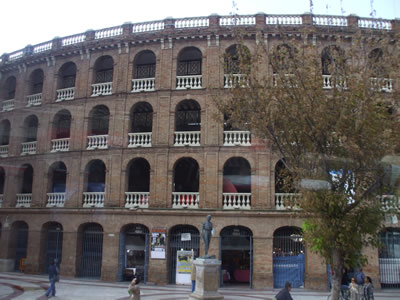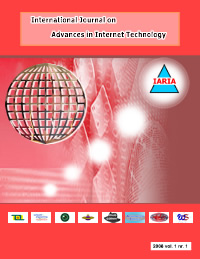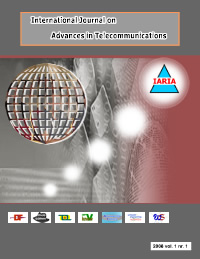ICSNC 2019 - The Fourteenth International Conference on Systems and Networks Communications
November 24, 2019 - November 28, 2019
ICSNC 2019: Call for Papers
The Fourteenth International Conference on Systems and Networks Communications (ICSNC 2019) continues a series of events covering a broad spectrum of systems and networks related topics. The conference covers fundamentals on wireless, high speed, sensor and mobile and ad hoc networks, security, policy based systems, and education systems. Topics are targeting design, implementation, testing, use cases, tools, and lessons learnt for such networks and systems.
The conference has the following specialized topics:
TRENDS |
Advanced features |
WINET |
Wireless networks |
HSNET |
High speed networks |
SENET |
Sensor networks |
MHNET |
Mobile and Ad hoc networks |
AP2PS |
Advances in P2P Systems |
MESH |
Advances in Mesh Networks |
VENET |
Vehicular networks |
RFID |
Radio-frequency identification systems |
SESYS |
Security systems |
MCSYS |
Multimedia communications systems |
POSYS |
Policy-based systems |
PESYS |
Pervasive education systems |
We solicit both academic, research, and industrial contributions. We welcome technical papers presenting research and practical results, position papers addressing the pros and cons of specific proposals, such as those being discussed in the standard fora or in industry consortia, survey papers addressing the key problems and solutions on any of the above topics short papers on work in progress, and panel proposals.
Industrial presentations are not subject to the format and content constraints of regular submissions. We expect short and long presentations that express industrial position and status.
Tutorials on specific related topics and panels on challenging areas are encouraged.
The topics suggested by the conference can be discussed in term of concepts, state of the art, research, standards, implementations, running experiments, applications, and industrial case studies. Authors are invited to submit complete unpublished papers, which are not under review in any other conference or journal in the following, but not limited to, topic areas.
All topics and submission formats are open to both research and industry contributions.
ICSNC 2019 conference tracks:
TRENDS: Advanced features
SDN, SDX, NFV; 4G/5G and advanced mobile Internet; Internet of X (everything, things, people, etc.); Internet, Virtualization and Cloud; Internet and Big Data; Sensing and sensor networks; Energy-aware networks; Content-oriented networking; Cellular cognitive networks; Future routing mechanisms; Cloud-based services; Online interactive services; Mobile services
WINET: Wireless networks
3G/4G/5G integration; Wireless protocols, architectural and design concepts; Design and implementation of mobile information systems; Wireless communications and mechanisms; Antenna and RF subsystems; Coding & modulation & equalization; Channel modeling and characterization; Equalization/Synchronization; Wireless technologies; Wireless applications & services; IP Multimedia subsystems (IMS); Wireless and mobility; Wireless-wireline convergence; Radio communications systems; Specialized wireless networks; Management of wireless networks; Position on standards & fora on wireless networks; Business models on wireless networks; Communications regulations, Spectrum management; Software-Defined Radio (SDR) [ architectures, hardware, software, signal processing and smart antennas, etc.]
HSNET: High speed networks
Technologies, protocols, and applications for high speed networks; Voice over high speed networks; Services and interconnections of high speed networks; Technologies for High speed optical networks; Optical burst switching; End-to-end applications; Optical control plan; Advanced optical technology architectures; Design of high speed systems and networks; Methodologies and development tools for high speed networks; Management and control of high speed networks; Performance in high speed networks; Security aspects in high speed networks; QoS/SLA in high speed networks; Diagnosing high speed networks; High speed networks and NGN
SENET: Sensor networks
Architectures and protocols for wired and wireless sensor networks; Internet of Things architectures and implementations; Design of sensor networks; Instrumentation and models for deployment of sensors networks; Power in sensor networks; Ad hoc and wireless sensor networks; Management and control of sensor networks; Performance in sensor networks; Security and reliability aspects in sensor networks; Information assurance in sensor networks; QoS/SLA in sensor networks; Applications, case studies and prototypes with sensor networks
MHNET: Mobile and Ad hoc networks
Mobile technology and fundamentals; Analytical and validation models for mobility; Architecture and routing protocols for mobile networks; Architectures, frameworks, fundamentals on ad hoc networks; Energy efficient design, cross-layer design, scalability; MAC protocols for ad-hoc and sensor networks (801.11, Bluetooth, etc.); Data, information, and signal processing in mobile networks; Complexity analysis of mobile algorithms and protocols; Software platforms and development tools supporting mobility; QoS/SLA, access control and security in mobile and ad hoc networks; Location and mobility management; Location and service discovery in ad hoc networks; Planning, provisioning, and deployment mobility features; Directional and smart antennas for mobile and ad-hoc networks; Performance and security in ad hoc and mobile networks; Self-organization, synchronization and stability in ad hoc networks; Self-management in ad hoc and mobile networks; Ad hoc and mobile networks and autonomic computing; Mobile ad hoc platforms, systems and tools; Applications over ad hoc networks; Standards evolution on mobility and ad hoc networks
AP2PS: Advances in P2P Systems
Architectures and protocols; Gossip-based and epidemic protocols; Integration with network operators and service providers; Autonomic computing and networking; Semantic P2P; Opportunistic networking; Content delivery networks; Applications; Prototypes and simulations; Implementations; Comparative performance analysis; Dependability, resilience and availability; Benchmarking and optimization; Quality of experience; Security, trust and reputation; Digital rights management; Content filtering; P2P and wireless convergence; Integrated approaches; Energy efficiency
MESH: Advances in Mesh Networks
Architectures and algorithms; Wireless interference models; Large-scale networks; Real-time and non-real-time communications; Centralized and distributed scheduling; Service differentiation; Security, Privacy, and Trust; Protocol interference models; Single-channel multihop/multichannel routing; Quality of Services routing; Multimedia-centric routing; Cross-layer multicast routing; QoS-based access protocols for mesh networks; Multichannel access protocols; Applications; Multimedia services; Home IPTV; WiMax; Broadband home networking communications; Smart buildings; Broadband Internet access
VENET: Vehicular networks
Communication technologies in vehicular networks; Frameworks and architectures for vehicular networks; Interoperability with Internet and other networks; Vehicle-infrastructure communications; Vehicle-to-vehicle communications; Emerging inter/intra-vehicle and infrastructure-to-vehicle wireless technologies; Cross-layer design and optimization for vehicular networks; Middleware and service architectures for vehicular networks; Propagation issues Vehicular sensors and data collection and process; On-drive diagnostics and repair technologies and systems; Protocol features /MAC, QoS, routing, multicast, addressing, identity/; Mobility and hand-off ; Properties /security, privacy, performance, robustness, real-time, etc./; Control and management in vehicular networks; Driver-oriented support systems /assistance, active&passive safety, etc./; Case studies and fields trials on vehicular networks; Applications across vehicular networks /content distribution, alerting, etc./; Standardization /802.11p, DSRC, etc./ and standard platforms /JasPar, AUTOSTAR, etc./
RFID: Radio-frequency identification systems
Fundamentals for RFID systems; Communications in RFID systems; Next generation RFID Technologies; RFID middleware design and architecture; Antenna design for RFID; System design and deployment; Circuits and architecture; RFID ans sensor networks; Bridging RFID networks in heterogeneous networks; Collision, proximity, speed; Security, privacy, trust; Monitoring and control of RFID systems; Localization and tracking; Inventory tracking; Testing and verification; Planing and executing RFID systems; RFID pilot projects; Use cases in deploying and operating /finance, manufacture, agriculture, transportation, etc./; Tools for supporting the design and deployment of RFID systems
SESYS: Security systems
Security analysis methodologies; Middleware and distributed systems security; Cryptography, certificates, information hiding, access control; Protection, risk, vulnerabilities, attacks, authorization/authentication; Access control, wireless access control, broadband access control; Biometrics, smart cards, identification and trust methodologies; Certification, accreditation anonymity, and audit; Security management, emergency contingency planning, identify theft, life safety; Wireless and mobile security; Fast security associations; Electronic surveillance and e-commerce protocols; Security and trust in web-services-based applications; Peer-to-peer security, denial of services; Information survivability, insider threat protection, integrity; Intellectual property rights, privacy, legal and regulatory issues; Criminal exploitation of technology; Commercial and industrial security; Viruses, hackers, worms, spam, and other malicious code
MCSYS: Multimedia communications systems
Technologies, protocols, and mechanisms for multimedia communications; Multimedia compression mechanisms and information representation; Multimedia encoding and compression, MPEG-1 to MPEG-4, Wavelet and fractal; Multimedia frameworks, communications, and middleware; Next generation multimedia communications; Mobile multimedia communications; Methodologies and development tools for multimedia communications systems; Wireless mobile multimedia communications; Ad hoc multimedia networks; IP-based Multimedia Subsystems (IMS); QoS/SLA in mobile multimedia services and applications; Mechanisms for interactive multimedia applications; Designing and implementing interactive applications; Multimedia authoring, publishing, and right securing; Security and performance for multimedia communications; Management, QoS, and security aspects in streaming over wireless ad hoc networks; Management and control of multimedia systems; Standards protocols for multimedia communications
POSYS: Policy-based systems
Policy for automation control; Trusting policy control commands; Policy-driven autonomic organizations; Policy-based control scalability; Policy sensors for feedback control; Policy conflict detection and conflict resolution; Context-aware policy-driven adaptive frameworks; Policy integrity, trust and negotiations; Policy-based software applications; Policing pervasive computing environments; Policing on-demand systems and services
PESYS: Pervasive education system
Learning and teaching systems; E-learning methods and e-learning scenarios; Tools and architectures for mobile/ubiquitous e-learning; Cooperative learning and working; Mobile technology and education; Distance learning and education; Computers and arts; Education in developing regions; Reflection in learning software and hardware; Social impact metrics on distance learning; Methodologies and processes for education; Curriculum projects and experiences; Intelligent support; Multimedia environment for teaching; E-market place for higher education; Embedded systems education; Wearable computers and education
Deadlines:
Submission | Aug 14, 2019 |
Notification | Sep 16, 2019 |
Registration | Sep 30, 2019 |
Camera ready | Oct 09, 2019 |
Deadlines differ for special tracks. Please consult the conference home page for special tracks Call for Papers (if any).
INSTRUCTION FOR THE AUTHORS
Authors of selected papers will be invited to submit extended versions to one of the IARIA Journals.
Publisher: XPS (Xpert Publishing Services)
Archived: ThinkMindTM Digital Library (free access)
Prints available at Curran Associates, Inc.
How to submit to appropriate indexes.
Only .pdf or .doc files will be accepted for paper submission. All received submissions will be acknowledged via an automated system.
Contribution types
- regular papers [in the proceedings, digital library]
- short papers (work in progress) [in the proceedings, digital library]
- ideas: two pages [in the proceedings, digital library]
- extended abstracts: two pages [in the proceedings, digital library]
- posters: two pages [in the proceedings, digital library]
- posters: slide only [slide-deck posted on www.iaria.org]
- presentations: slide only [slide-deck posted on www.iaria.org]
- demos: two pages [posted on www.iaria.org]
FORMATS
Only .pdf or .doc files will be accepted for paper submission. All received submissions will be acknowledged via an automated system.
Final author manuscripts will be 8.5" x 11", not exceeding 6 pages; max 4 extra pages allowed at additional cost.
Helpful information for paper formatting for MS Word can be found here.
There is a community provided LaTeX template: the CTAN package iaria (with full IARIA formatting rules, including IARIA citation style, but for providing citation style it is tightly bound to pdflatex+biblatex+biber). In addition, there is also iaria-lite (not bound to pdflatex+biblatex+biber, but compatible with any TeX stack; thus, it cannot provide the IARIA citation formattings, but only the titlepage and content-related IARIA formatting rules). Based on the iaria package, there is a minimal working example as Overleaf template. When you are using the LaTeX templates, please still adhere to the additional editorial rules.
Slides-based contributions can use the corporate/university format and style.
Your paper should also comply with the additional editorial rules.
Once you receive the notification of contribution acceptance, you will be provided by the publisher an online author kit with all the steps an author needs to follow to submit the final version. The author kits URL will be included in the letter of acceptance.
We would recommend that you should not use too many extra pages, even if you can afford the extra fees. No more than 2 contributions per event are recommended, as each contribution must be separately registered and paid for. At least one author of each accepted paper must register to ensure that the paper will be included in the conference proceedings and in the digital library, or posted on the www.iaria.org (for slide-based contributions).
CONTRIBUTION TYPE
Regular Papers (up to 6-10 page article -6 pages covered the by regular registration; max 4 extra pages allowed at additional cost- ) (oral presentation)
These contributions could be academic or industrial research, survey, white, implementation-oriented, architecture-oriented, white papers, etc. They will be included in the proceedings, posted in the free-access ThinkMind digital library and sent for indexing. Please submit the contributions following the instructions for the regular submissions using the "Submit a Paper" button and selecting the appropriate contribution type. 12-14 presentation slides are suggested.
Short papers (work in progress) (up to 4 pages long) (oral presentation)
Work-in-progress contributions are welcome. These contributions represent partial achievements of longer-term projects. They could be academic or industrial research, survey, white, implementation-oriented, architecture-oriented, white papers, etc. Please submit the contributions following the instructions for the regular submissions using the "Submit a Paper" button and selecting the contribution type as work in progress. Contributors must follow the conference deadlines, describing early research and novel skeleton ideas in the areas of the conference topics. The work will be published in the conference proceedings, posted in the free-access ThinkMind digital library and sent for indexing. For more details, see the Work in Progress explanation page. 12-14 presentation slides are suggested.
Ideas contributions (2 pages long) (oral presentation)
This category is dedicated to new ideas in their very early stage. Idea contributions are expression of yet to be developed approaches, with pros/cons, not yet consolidated. Ideas contributions are intended for a debate and audience feedback. Please submit the contributions following the instructions for the regular submissions using the "Submit a Paper" button and selecting the contribution type as Idea. Contributors must follow the conference deadlines, describing early research and novel skeleton ideas in the areas of the conference topics. The work will be published in the conference proceedings, posted in the free-access ThinkMind digital library and sent for indexing. For more details, see the Ideas explanation page. 12-14 presentation slides are suggested.
Extended abstracts (2 pages long) (oral presentation)
Extended abstracts summarize a long potential publication with noticeable results. It is intended for sharing yet to be written, or further on intended for a journal publication. Please submit the contributions following the instructions for the regular submissions using the "Submit a Paper" button and selecting the contribution type as Extended abstract. Contributors must follow the conference deadlines, describing early research and novel skeleton ideas in the areas of the conference topics. The work will be published in the conference proceedings, posted in the free-access ThinkMind digital library and sent for indexing. 12-14 presentation slides are suggested.
Posters (paper-based, two pages long) (oral presentation)
Posters are intended for ongoing research projects, concrete realizations, or industrial applications/projects presentations. The poster may be presented during sessions reserved for posters, or mixed with presentation of articles of similar topic. A two-page paper summarizes a presentation intended to be a POSTER. This allows an author to summarize a series of results and expose them via a big number of figures, graphics and tables. Please submit the contributions following the instructions for the regular submissions using the "Submit a Paper" button and selecting the contribution type as Poster Two Pages. Contributors must follow the conference deadlines, describing early research and novel skeleton ideas in the areas of the conference topics. The work will be published in the conference proceedings, posted in the free-access ThinkMind digital library and sent for indexing. 8-10 presentation slides are suggested. Also a big Poster is suitable, used for live discussions with the attendees, in addition to the oral presentation.
Posters (slide-based, only) (oral presentation)
Posters are intended for ongoing research projects, concrete realizations, or industrial applications/projects presentations. The poster may be presented during sessions reserved for posters, or mixed with presentation of articles of similar topic. The slides must have comprehensive comments. This type of contribution only requires a 8-10 slide-deck. Please submit the contributions following the instructions for the regular submissions using the "Submit a Paper" button and selecting the contribution type as Poster (slide-only). The slide-deck will be posted, post-event, on www.iaria.org.
8-10 presentation slides are suggested. Also a big Poster is suitable, used for live discussions with the attendees, additionally to the oral presentation.
Presentations (slide-based, only) (oral presentation)
These contributions represent technical marketing/industrial/business/positioning presentations. This type of contribution only requires a 12-14 slide-deck. Please submit the contributions following the submission instructions by using the "Submit a Paper" button and selecting the contribution type as Presentation (slide-only). The slide-deck will be posted, post-event, on www.iaria.org.
12-14 presentation slides are suggested.
Demos (two pages) [posted on www.iaria.org]
Demos represent special contributions where a tool, an implementation of an application, or a freshly implemented system is presented in its alfa/beta version. It might also be intended for thsoe new application to gather the attendee opinion. A two-page summary for a demo is intended to be. It would be scheduled in special time spots, to ensure a maximum attendance from the participants. Please submit the contributions following the submission instructions by using the "Submit a Paper" button and selecting the contribution type as Demos. The Demos paper will be posted, post-event, on www.iaria.org.
Tutorial proposals
Tutorials provide overviews of current high interest topics. Proposals should be for 2-3 hour long. Proposals must contain the title, the summary of the content, and the biography of the presenter(s). The tutorial slide decks will be posted on the IARIA site.
Please send your proposals to tutorial proposal
Panel proposals
The organizers encourage scientists and industry leaders to organize dedicated panels dealing with controversial and challenging topics and paradigms. Panel moderators are asked to identify their guests and manage that their appropriate talk supports timely reach our deadlines. Moderators must specifically submit an official proposal, indicating their background, panelist names, their affiliation, the topic of the panel, as well as short biographies. The panel slide deck will be posted on the IARIA site.
Please send your proposals to panel proposal
